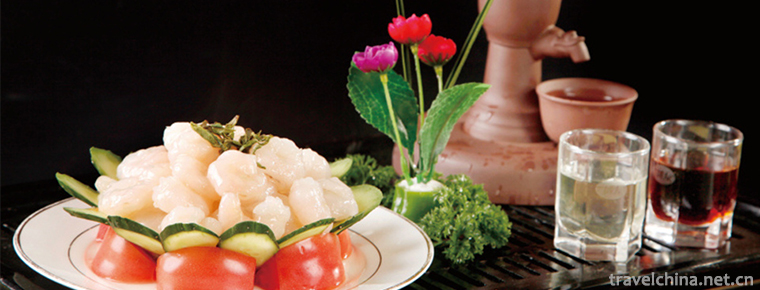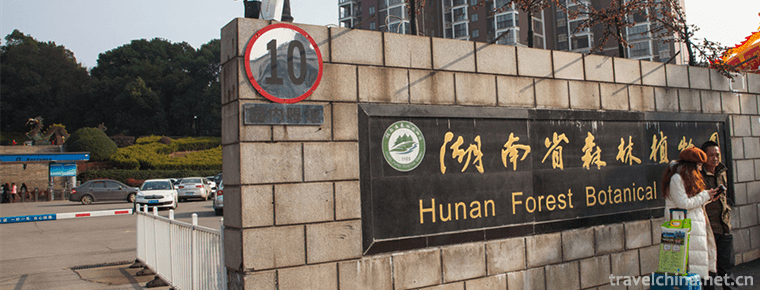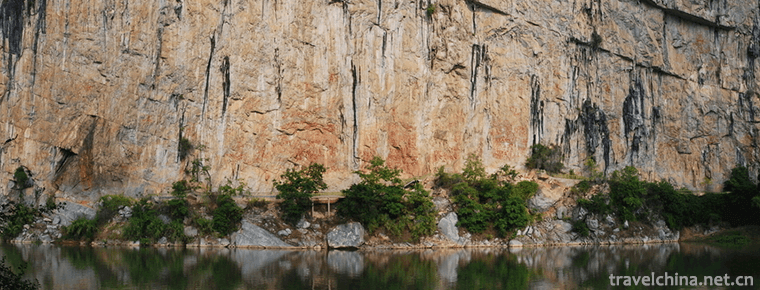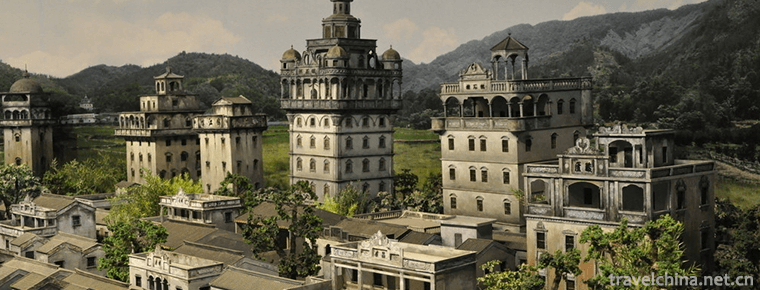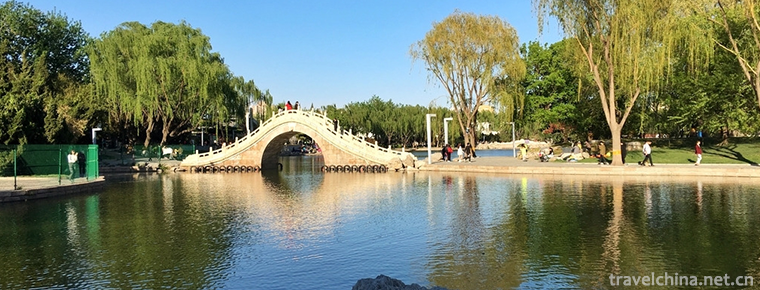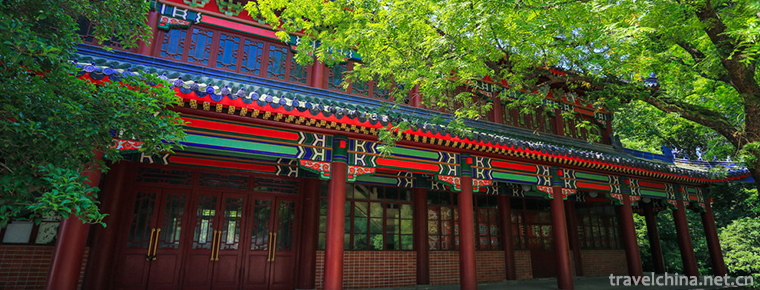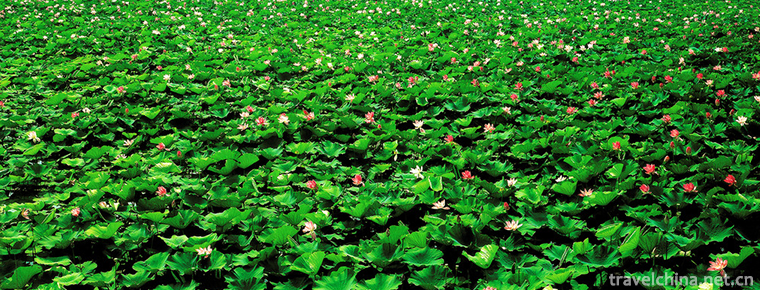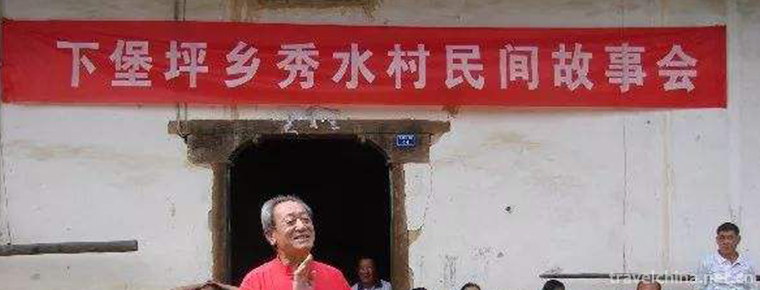Jianmen Shu Road
Jianmen Shu Road
Jianmen Shudao is one of the first batch of national scenic spots, with jianmengguan as the core, starting from Ningqiang, Shaanxi in the north and Chengdu in the south, with a total length of 450 km. The culture of the three kingdoms along Jianmen Shu Road is profound. Pang Tong, Jiang Wan, Jiang Wei, Deng AI, Ma Chao and Bao Sanniang have left wonderful stories here. There are many historical sites along Jianmen Shu Road, including Sanxingdui site, Deyang Confucian temple, Zhaohua ancient city, qiqushan temple, huangze temple, Qianfo cliff, etc Three hundred Li, the moon gorge "flying beam frame Jue Ling.". Li Bai, a poet immortal 1000 years ago, became famous all over the world for his "difficult road to Sichuan, but hard to climb the blue sky". Hundreds of miles of ancient Shu Road, mountains and peaks, cliffs and clouds, majestic, steep, magnificent, constitute a major barrier of Sichuan and Shaanxi traffic.
On December 17, 2014, the Ministry of housing and urban rural development announced the results of this year's law enforcement inspection. Jianmen Shudao scenic spot was rated as substandard. It was criticized and ordered to rectify within a time limit.
On December 11, 2015, the Ministry of housing and urban rural development put Sichuan Jianmen Shudao scenic area into the endangered list and gave a yellow card warning; the Ministry of housing and urban rural development ordered it to rectify within a time limit and focus on supervision.
History and culture
Sichuan has "four wonders" - the wonder of Jiuzhai, the beauty of Emei, the seclusion of Qingcheng and the danger of Jianmen. The first three have become tourist attractions, but Jianmen is a forgotten corner. However, it has always been a favorite place for tourists from Japan and Southeast Asia. It was also a post station for Phoenix Satellite TV's "Millennium Tour" to explore civilization. What attracted people's reverent steps and what made it a dignified page in the historical picture?
There are three ancient Sichuan roads in northern Sichuan: Jinniu Road, Yinping road and Micang road. The most important Jinniu Road is Jianmen Shu Road, which was listed in the updated "China world cultural heritage reserve list" by the State Administration of cultural relics in 2013. Zhuge Liang, the Prime Minister of the Shu Dynasty of the Three Kingdoms, built a stone gate along the cliff in the middle of Dajian mountain (Jianmen mountain), so it was named jianmengguan Feiliang gedao, jiangge also got its name. Jianmen pass is like a city wall, a single road is like a gate, one man is in charge of the pass, and thousands of people are not allowed to open it. It has become a place of contention for all generations of strategists, and it is also the throat of ancient Shu Road. From Fengzhou to Jianzhou, there are more than 90000 original bridges and pavilions built on the precipices. Now they are gone. Just a few years ago, a city pass was rebuilt on the site of gujianmenguan pass, which became a brand-new symbol of the millennium old road behind it.
When the sword gate was closed, Li Bai, the immortal poet, sighed: "the danger is too high. It is difficult to go up to the blue sky because of the difficulty of Shu Road." Jianmen Shu Road. This ancient road from Xi'an in the north to Chengdu in the South was once the throat of the Central Plains to the southwest. In the center of Jianmen Shu Road and located in Guangyuan, Sichuan, this JIANMENGUAN pass is a place that must be fought by the strategists of "one man is in charge, and ten thousand men are not allowed to open it". Anyone who wants to be called a king in Sichuan must first attack this natural danger. "To strike the Jianmen pass is like getting Sichuan". Since Kong Ming, the Three Kingdoms, set up the pass, Jianmen pass has been an extremely dangerous ancient battlefield. JIANMENGUAN, which stretches across the Shu Road, is a conglomerate peak stretching for hundreds of miles. The so-called "Jianmen without soil" refers to the huge conglomerate with short grass in Jianmen. Viewed from the front, the stone wall is like a natural city wall with copper walls and iron walls. It blocks the mountains thousands of miles from Qinling Mountains and blocks the steps from the Central Plains. From the side, it looks like a huge wave; From the back, it looks like a group of galloping horses, which frightens all intruders.
This dangerous pass is made by nature. The ancient Sichuan Basin was an inland sea. During the Cretaceous crustal movement, the sea water fell and the seafloor rocks rose, forming a hard conglomerate mountain. The mountain has 72 peaks, which are like swords. The two mountains of Jianshan, big and small, face each other like a gate, so it is called Jianmen. Jianmen Shu road winds through the crack of the door.
During the period of the Three Kingdoms, when Kong Ming was in the northern expedition to the Central Plains, he passed through this place. Seeing that the terrain was easy to defend and difficult to attack, he built a pass here, and Jianmen pass came from it. Today, at Jianmen pass, you can see that there is a Feiliang Pavilion Road at the pass of the gorge, which was built for the delivery of military supplies; while the tower of the Three Kingdoms is majestic, with a three story archery tower on it, with Jinduo hanging on the cornice and the corner, clanging sound, day and night. The present ancient guanlou was rebuilt in 1989.
The closing of the gate of Jianmen witnessed the bloodbath for thousands of years. In history, no strategist ever attacked Jianmen pass from the front. Only in 1935, under the command of Li Xiannian, the Red Army forcibly crossed the Jialing River, closed the gate after detour, and raided yingpanzui to conquer Jianmen pass. In countless battles, the story of Jiang Wei guarding Jianmen pass has been handed down for thousands of years. At that time, Jiang Wei, a general of the Shu Han Dynasty, rejected the 100000 troops of Deng AI of Wei state with only 30000 men. As the romance of the Three Kingdoms has been deeply rooted in the hearts of Southeast Asian countries such as Japan, "Jianmen pass" has become a resort for people who have traveled a long way to remember history.
geographical position
Jianmen ancient Shu Road, with the ancient city of Jiange as the center, extends to Chaotian Gorge (also known as Mingyue gorge) in Chaotian Town, Chaotian District in the north, and Yanwu Town, Zitong County, Mianyang City in the south, with a total length of more than 200 kilometers. It began in the Western Zhou Dynasty, used to the end of the Qing Dynasty and extended to the 25th year of the Republic of China (1936). Shu Road, it is the ancient Shaanxi Chang'an to Sichuan Chengdu land transportation. In ancient times, Shaanxi was called Qin, and Sichuan was called Shu. In historical documents, this road was called "ancient road of Qin and Shu" for short. Jianmen ancient Shu Road is an ancient road in JIANMENGUAN, south of Shu Road. It is named "Jianmen ancient Shu Road" because it passes through the dangerous Jianmen gate.
In the late Warring States period, before 316 B.C., the earliest plank road in ancient Chinese traffic history was built on this road. Because of the allusions of "Jinniu Shijin" and "Wuding Kaidao", it was known as "Jinniu Dao" (also known as Shiniu Road). Shudao is divided into two sections: one is qipanling (ancient Ningqiang) in Ningqiang, Shaanxi Province, which is the geographical boundary between the north and the south. Therefore, the northern section is called Beizhan, also known as qinzhan. Jianmen ancient Shu Road is located in the South and north of Shu Road, so it is called Nanzhan, also known as shuzhan. In the Shu Han period of the Three Kingdoms, it was called "Jiangmen road" (Jianmen, formerly known as jiangge), which is the official post road from Guanzhong to Shu since Qin and Han Dynasties.
Introduction to scenic spots
survey
Jianmen Shudao belongs to Jianmen Shudao scenic spot. It is one of the first national scenic spots approved by the State Council. It is located in Mianyang and Guangyuan. JIANMENGUAN is close to Guangyuan. Therefore, Jianmen Shudao scenic area mainly refers to the scenic spots along the line from Guangyuan to Mianyang via JIANMENGUAN and jiangge. If the scope is further expanded, the scenic spots of Jiangyou and Pingwu can also be included. It is a strip-shaped scenic spot with "Shu Road" as the main trunk among the continuous Qinling, Bashan and Minshan mountains. Sichuan Road starts from Ningqiang County, Hanzhong, Shaanxi Province in the north and Chengdu, Sichuan Province in the south, with a total length of 450 km. It passes through Guangyuan, Jiange, Zitong, Mianyang, Deyang and other places. Along the route, the terrain is dangerous, the mountains are emerald, the scenery is precipitous, and there are many passes. In the Tang Dynasty, Li Bai described it as "it is difficult to climb the road in Sichuan, but it is difficult to go up to the blue sky". There are many scenic spots along the Shu Road, such as ancient plank road, relics of ancient battlefield of the Three Kingdoms, huangze Temple of Wu Zetian temple, Qianfo rock of Tang and Song Dynasties, JIANMENGUAN pass, Cuiyun corridor of ancient post road, Qiqu mountain temple, Li Bai's hometown, etc.
Huangze Temple
Jianmen Shudao belongs to Jianmen Shudao scenic spot. It is one of the first national scenic spots approved by the State Council. It is located in Mianyang and Guangyuan. JIANMENGUAN is close to Guangyuan. Therefore, Jianmen Shudao scenic area mainly refers to the scenic spots along the line from Guangyuan to Mianyang via JIANMENGUAN and jiangge. If the scope is further expanded, the scenic spots of Jiangyou and Pingwu can also be included. It is a strip-shaped scenic spot with "Shu Road" as the main trunk among the continuous Qinling, Bashan and Minshan mountains. Sichuan Road starts from Ningqiang County, Hanzhong, Shaanxi Province in the north and Chengdu, Sichuan Province in the south, with a total length of 450 km. It passes through Guangyuan, Jiange, Zitong, Mianyang, Deyang and other places. Along the route, the terrain is dangerous, the mountains are emerald, the scenery is precipitous, and there are many passes. In the Tang Dynasty, Li Bai described it as "it is difficult to climb the road in Sichuan, but it is difficult to go up to the blue sky". There are many scenic spots along the Shu Road, such as ancient plank road, relics of ancient battlefield of the Three Kingdoms, huangze Temple of Wu Zetian temple, Qianfo rock of Tang and Song Dynasties, JIANMENGUAN pass, Cuiyun corridor of ancient post road, Qiqu mountain temple, Li Bai's hometown, etc.
Huangze Temple
Huangze temple is the only temple for Empress Wu Zetian in China. It is located on the Bank of Jialing River in Guangyuan City, Sichuan Province. It is grand in momentum, elegant in temples and of extraordinary value. In 1961, it was announced as one of the first batch of national key cultural relics protection units by the State Council. Huangze temple is located on the West Bank of xijialing River and the east foot of Wulong mountain in Guangyuan City, Sichuan Province.
Huangze temple is not only the only Wu Zetian temple in China, but also contains 6 caves, 41 niches, 1203 cliff statues and inscriptions from the Northern Wei Dynasty to the Ming and Qing Dynasties. It is not only of high cultural relic value, but also of high ornamental and research value, and is praised as a treasure of traditional Chinese culture by experts.
Zhaohua ancient city
Zhaohua was called Jiameng in ancient times. It has a history of more than 4000 years and a history of 2244 years of continuous County construction. It is an important part of the national key scenic spot Jianmen Shudao scenic spot and the national key cultural relic protection unit Jianmen Shudao site group. It is the only well preserved ancient city of the Three Kingdoms in China so far.
Zhaohua ancient city is located at the confluence of Bailong River, Jialing River and Qingjiang River. The water of Jialing River flows here, with Wancheng water system and Tiancheng Taiji. It has the reputation of "the world's first mountain and water Tai Chi" natural wonder. Surrounded by mountains on all sides and surrounded by water on three sides, the ancient city has beautiful mountains and rivers, outstanding people, numerous ancient sites and relics, and simple and elegant folk customs. It is an ideal place for the majority of tourists to sightseeing, leisure and vacation, and archaeology research.
With an area of 20 square kilometers and a total population of 17000, the ancient city was named as a famous historical and cultural town in Sichuan Province by the people's Government of Sichuan Province in 1992. As one of the earliest counties in ancient China, the ancient city is known as "the first county in Bashu and the second capital of Shu".
Jianmen pass
Jianmen pass, located 15 kilometers south of Jiange County, Sichuan Province, is located in the northern edge of the Sichuan Basin fault fold belt, the middle fault of Dajian mountain and Xiaojian mountain. Both sides are cliffs and cliffs. The peaks are like swords, and the two walls face each other like doors. Therefore, Jianmen pass is one of the most famous natural passes in China. It enjoys the reputation of "Jianmen in the world", "the first pass in the world" and "the gateway of Shu". Zhuge Liang, the Prime Minister of the Shu Han Dynasty of the Three Kingdoms, once built a plank road of 30 Li and set up a guard, known as the "sword Pavilion". The praise of the Tang Dynasty poet Li Bai's "difficult road in Shu" is that "the Jiange is towering and Cui Wei, one man is in charge of the pass, and ten thousand people are not allowed to open it". In 1982, it was listed as the first batch of national key scenic spots by the State Council; in September 2010, it was listed as national AAAA scenic spot.
The most important thing is to close the gate of Shu. The mountains here span more than 100 kilometers from east to west, with 72 peaks rolling up and down, like sharp swords, straight into Xiaohan. The mountain is extremely dangerous, and the only road is like a door. Entering the 500 meter long deep gorge, we can see the inscriptions such as "the grand pass of the world", "the first pass" and "the 72 peaks of Jian Ge" left by our predecessors. The newly-built Jianmen pass building stands majestically at the pass. The surrounding mountains stretch, green vegetation cage, beautiful scenery.
Cuiyun corridor
Cuiyun corridor is a section of the ancient Shu Road, and also a section of Jianmen Shu Road, which is famous for its danger. Cuiyunlang, also known as "Huangbai" and "zhangfeibai" in ancient times, is located in Jiange County, Guangyuan City, Sichuan Province, and Zitong County, Mianyang City. Cuiyunlang in Jiange county has been built into a national AAAA scenic spot.
Cuiyun corridor once had a spectacular scene of "more than 300 miles of official roads, tens of millions of ancient cypresses". There are more than 8000 ancient cypresses, which are mainly distributed in the section from JIANMENGUAN to Jiange county. Some of them are interspersed on both sides of Sichuan Shaanxi highway. The branches are towering and the sun is covered with thick shade. They are luxuriant and verdant. When viewed from a distance, they look like clouds, so they are named. It retains the old appearance of the original "Post Road" and is full of ancient customs. After more than a thousand years of rain, snow, wind and frost, it is more vigorous and desolate. In the setting sun of the ancient road, people can feel the endless feeling that the past people have gone and the world is long.
The ancient cypress post road tree group, also known as "green cloud corridor" and "yellow cypress tree", is the ancient model of planting trees to protect the road. From the perspective of function, the first is to plant trees to form road signs; the second is to protect the road to prevent rain from scouring the subgrade; the third is to repair the plank road and cut trees nearby to obtain materials; the fourth is to provide convenience for pedestrians, shading and summer.
The existing scale of ancient post road trees is one of the world's best. According to statistics, there are 12351 ancient cypresses in Jianmen Shu Road, which are regularly distributed on both sides of the 344 km post road, including 7886 in Jiange County, 496 in Zitong, 144 in Zhaohua, 17 in Langzhong and 3808 in Nanjiang. The investigation group of ancient cypress in Jiange County CPPCC and County Forestry Bureau sampled 1981 ancient cypress trees in baduan, 669 (33.7%) were with DBH 1m, 1217 (61.43%) were with DBH from 1m to 1.7m, 95 (4.8%) were with DBH of 1.2m and 2.78m. The DBH of an ancient cypress growing in baishuwan, Yanwu Township, Zitong county was determined by Sichuan Forestry Institute. The DBH was 1.55 m, and the age of the tree was over 1700 years. From this point of view, there are quite a few thousand year old cypresses.
Qiqushan Temple
Located in the northern suburb of Zitong County, Mianyang City, qiqushan Damiao scenic area is a famous scenic spot in Northwest Sichuan Province. It is located on the side of Sichuan Shaanxi highway 10 kilometers north of Zitong city. It is also known as "imperial township" because it is the birthplace of Wenchang emperors in China. Here, majestic mountains, winding roads, towering temples, along the cliff, tree shade, beautiful scenery, known as "the Pearl of Shu Road.". The story of "Wuding Kaishan" described by Li Bai, a poet of Tang Dynasty, in his poem "Shu Dao Nan".
Qiqushan temple, formerly known as "Wenchang Palace", is the special Temple of Zhang Yazi, emperor of Wenchang. Since the Yuan Dynasty, after the continuous expansion of the Ming and Qing Dynasties, it has become the present scale. There are 23 temples and pavilions. Its structure is strict, the layout is orderly, and the corridor waist is winding. It is a rare ancient architectural complex in Sichuan, with strict structure, orderly layout, winding natural corridor, carved beams and painted buildings. There are rare iron statues, iron vase and other precious cultural relics in the temple. Zhang Xianzhong, leader of the peasant uprising army in the late Ming Dynasty, once regarded the temple as a "family temple". Now qiqushan temple has been rated as "national key cultural relics protection unit".
Historical site
Yi He Pu
From the place names along Jianmen Shu Road, the road administration is very perfect. The post road was originally called "official road" and "road", which was the only land channel from Xi'an to Chengdu in ancient times. It was originally used by officials and envoys to send military and political books. Later, it gradually became a traffic avenue for private business activities. The establishment of post road management and service agencies has become a top priority for rulers of all dynasties.
Along the way from Chengdu to Xi'an, there are many places named by some shops and post houses, such as hanyangpu, chaoshou shop, Jianmen post, Longquanyi, etc. According to statistics, there are 56 shops and 14 post stations on the ancient road from Guangyuan to Mianyang, forming a complete unified system of transportation, military, public security and postal service. Shops and post houses are places for officials to change horses, stay temporarily and rest on the way. They are specialized agencies set up by the state to manage post roads and ensure transportation. According to the historical chronology of Jian Ge, the scale of post and shop was different in different historical periods. Take the Qing Dynasty as an example, generally, there is a shop every 10 Li and a post house every 40 Li. There are 2-5 soldiers, 12-16 post horses, 2-6 horsemen and 10-20 bearers in each shop and post. The shops and post stations also had post Cheng, management, documents, veterinarian, residence and cook, which not only solved the problems of tree protection and road protection, but also solved the problems of food, housing and transportation for pedestrians. At that time, it was very perfect and advanced.
The long Shu Road, with a long history, has left many ground cultural relics related to the road supporting construction, which provides the material basis for the research of ancient land transportation.
Fence wall
The horse wall is a kind of wall built in the dangerous place of the post road to prevent the errant from falling off the cliff. Generally, the height is more than 1 m and the width is about 0.8 M. the length depends on the situation of the dangerous road. The retaining wall is divided into earth wall and stone wall. The wall is made of pebbles, with earth in the middle. The stone wall is made of big blue stone, with lime and glutinous rice as adhesive. The building is firm and beautiful, and white ash is painted on it to remind riders to pay attention to ensure safety.
Water horse trough
Horse drinking trough, also known as Yinma pool, is a water tank dug on the big blue stone. It is divided into movable water tank and fixed water tank, which provides drinking water for horses. The water horse trough is usually set beside the post road without water source. In case of drought, the management personnel of the shop or the local people carry water and pour it into the water horse trough. When it rains, it is solved by storing rainwater. The bluestone pavement in Shu Road is generally 2-3 meters wide, and the widest part is 5 meters. The main reason is that there are 10 cm thick and more than 1 m deep "threshold stone" which depends on the road surface. The "threshold stone" is to stabilize the foundation slab and step stone, and the second is to slow down the brake of "Mu Niu" (chicken bus). The stone road is smooth and concave, with traces of vehicles and horses of past dynasties, leaving footprints of ancient and modern pedestrians, which is the archaeological evidence of that year.
Plank road
The plank road is divided into earth stack and stone stack. Soil stack stone in the lush forest mountain road, mixed with earth and stone. Stone stack, also known as attic Road, is a road formed by drilling holes in the cliff, supporting wooden piles and then laying wood boards. Shudao earth stack almost no longer exists, but remains of stone stack remains. The stone hole of supporting column of plank road between cliff remains visible. The hole is about 30cm square and 50cm deep.
The site selection of stone plank road is very particular. For example, the plank road of Mingyue gorge is close to dashuliangfeng, like Hukou and next to Jialing River. If the road is built on the cliff, it will cost too much and the project will be difficult. If the road is built at the top of the mountain, it will be difficult to find a way to stop at the foot of the mountain. If the road is built at the foot of the mountain, there is no place to stop in the torrent and muddy pool, so it is difficult to build on the cliff Build a plank road.
Tour tips
1. Jianmen Shudao is a geographical concept with a wide range and many scenic spots. Each scenic spot has its own characteristics. The scenery along the way is unlimited. You should make full preparation before walking, because the journey is very long, so you should make a comprehensive plan.
2. It is a very hard work to visit the whole journey of Jianmen Shu Road. You should make psychological and travel preparation in advance. You can't go in a hurry and leave regret. It's very difficult to remedy.
3. To visit Jianmen Shu Road, you can get off at Guangyuan station of Baocheng railway, and then take a tour along Sichuan Shaanxi highway. After a day's sightseeing in Guangyuan City, take a bus to JIANMENGUAN pass, about 57 kilometers. After visiting Jianmen pass, you can drive through "Cuiyun corridor" and drive 30 kilometers to Jiange. Live in the sword Pavilion. On the third day, starting from Jiange, on the way to visit Wenchang palace through Zitong, you can get down to Mianyang, a total of 127 kilometers. After visiting the junque of Yangfu and Xishan in Hanping, we spent the night in Mianyang, ending the tour of Jianmen Shu Road.
Plan to adjust 0 distance, covering Jianmen Shu Road, Yading and other Sichuan Jingdian scenic spots
Flavor specialty
Jianmen tofu
It refers to the unique tofu produced by JIANMENGUAN, a scenic spot in Shudao, Jianmen. It is said that Jianmen tofu dates back to the Three Kingdoms period. Jiang Wei, a general of Shu Han, retreated to Jianmen pass after being defeated by Wei generals Zhong Hui and Deng AI in Hanzhong. At that time, the soldiers in the northern part of Sichuan Province could not ride the horse and watch the battle. A local official in Jianmen was busy offering advice to Jiang Wei: he would not fight for three days after closing the door. He would grind Soybean milk at ordinary people's homes, reward soldiers with bean curd, feed war horses with bean dregs, and fight again when the soldiers and horses recover their physical strength. It's really a good plan. Make soldiers and horses recover quickly. Three days later, Jiang Wei only led 5000 soldiers to kill Xiaguan, and defeated Zhonghui, which made Wei soldiers retreat dozens of miles to the village and solved the crisis of Jianmen.
Jiuchong Jiuxiang
Nine fragrant insect, is a kind of flying green black beetle, nail size, like a turtle. In spring and summer, climbing on the stems and leaves of crops and sucking the slurry, if you don't pay attention to it, you will emit a kind of strange smelly and difficult gas, which makes people stay away from it. Therefore, it is called "fart bug" or "fart bug". It contains nine fragrant insect oil. Once it is fried, it is a kind of delicious medicinal food, which can cure diseases and prolong life. Therefore, it has won the reputation of "nine fragrant insects".
Jianmen walking stick
It is also called a sword stick. Exquisite workmanship, exquisite material selection, are based on natural growth. The shape of the dragon head (known as the dragon head crutches), tiger head and other animals. It is popular at home and abroad.
Jianmen ancient green tea
Jianmen ancient road brand green tea is well-known in history (records of scenic spots in Central Sichuan): Liangshan Temple produces tea, which is also a wonder in Sichuan. In fact, as early as the Tang Dynasty, Jianmen green tea had become a tribute. When Lu fangweng, a poet of the Song Dynasty, tasted a cup of tea and praised it. After the red army conquered Jianmen pass, several generals commanding the battle also said that "there is tea fragrance in the majestic pass". Jianmen ancient road scenic area tea mountain area is more than 1000 meters above sea level, abundant rainfall, mild climate, fertile soil, suitable for tea growth. Since the founding of the people's Republic of China, there are more than ten tea bases in JIANMENGUAN ancient road scenic area, covering an area of more than ten thousand mu. As a result, the green tea of Jianmen 72 peak is well-known, and it is believed that it is particularly favored by the tea kings.

-
Stirfried Shrimps with Longjing Tea Leaves
Lobwell shrimp is a famous Hangzhou dish with a strong local flavor. It is made of lobwell tea and shrimp before and after the Qingming Festival. .
Views: 184 Time 2018-10-27 -
Beijing Wildlife Park
Beijing Daxing Wildlife Park is located in the 10,000 Mu forest of Yuyuan Town, Daxing District. It is a large natural ecological park with animal protection, wildlife domestication and breeding and p.
Views: 100 Time 2018-12-26 -
Hunan Forest Botanical Garden
Hunan Forest Botanical Garden, also known as Tianjiling National Forest Park and Changsha Botanical Garden, was established in 1985 with the approval of Hunan Provincial People's Government and is und.
Views: 79 Time 2019-01-16 -
Huashan pictographs
Huashan rock paintings are located in the Zuojiang River and its tributary Mingjiang River valley of Chongzuo City, Guangxi (covering Ningming County, Longzhou County, Jiangzhou District and Fusui Cou.
Views: 174 Time 2019-01-17 -
Kaiping Diaolou and Villages
In Kaiping city, there are many blockhouses, towns and countryside. There are more than a dozen villages and less than two or three villages. From Shuikou to Lily.
Views: 84 Time 2019-01-29 -
Longtan Park
Longtan Park is located opposite Longtan Beili District, Dongcheng District, Beijing (Chongwen District), and is currently a national 4A-level tourist park. Longtan Park .
Views: 126 Time 2019-02-06 -
Ming Xiaoling Mausoleum
The Ming Xiaoling Tomb is situated at the south foot of Zijinshan Mountain in Xuanwu District, Nanjing, under Dulongfu Playing Pearl Peak. It is adjacent to Zhongshan Tomb in the East.
Views: 152 Time 2019-02-07 -
Weishan Lake National Wetland Park
Weishan Lake National Wetland Park, located in the southern part of Weishan County, Jining City, Shandong Province, is less than 3 kilometers away from the urban area..
Views: 196 Time 2019-02-22 -
Song of Sichuan river
Chuanjiang chant is a kind of traditional folk singing form that the shipworkers in Chuanjiang valley of Sichuan and Chongqing area lead the singing by the trumpeters for unified movement and rhythm.
Views: 161 Time 2019-04-19 -
Xiabaoping Folk Stories
There are many original ecological works of Xiabaoping folk tales, which have distinct local characteristics and high cultural taste. It is the epitome of the traditional folk literature in the Three .
Views: 343 Time 2019-07-01 -
Anhui Medical University
Medical University Of Anhui (Anhui Medical University), referred to as "an Medical University", located in the capital of Anhui. Hefei City Yes. Key universities in Anhui By Anhui Provincial.
Views: 102 Time 2019-10-10
